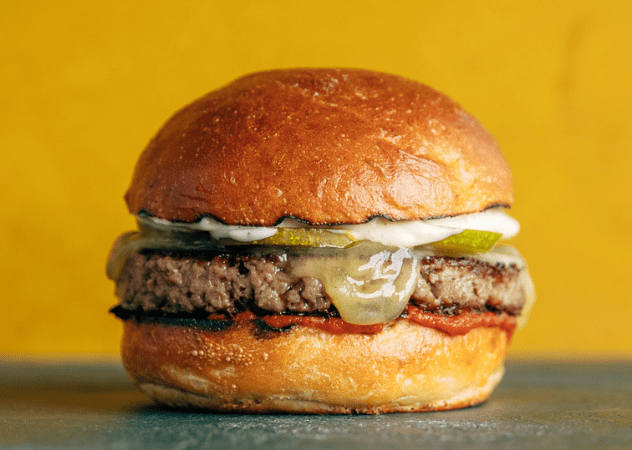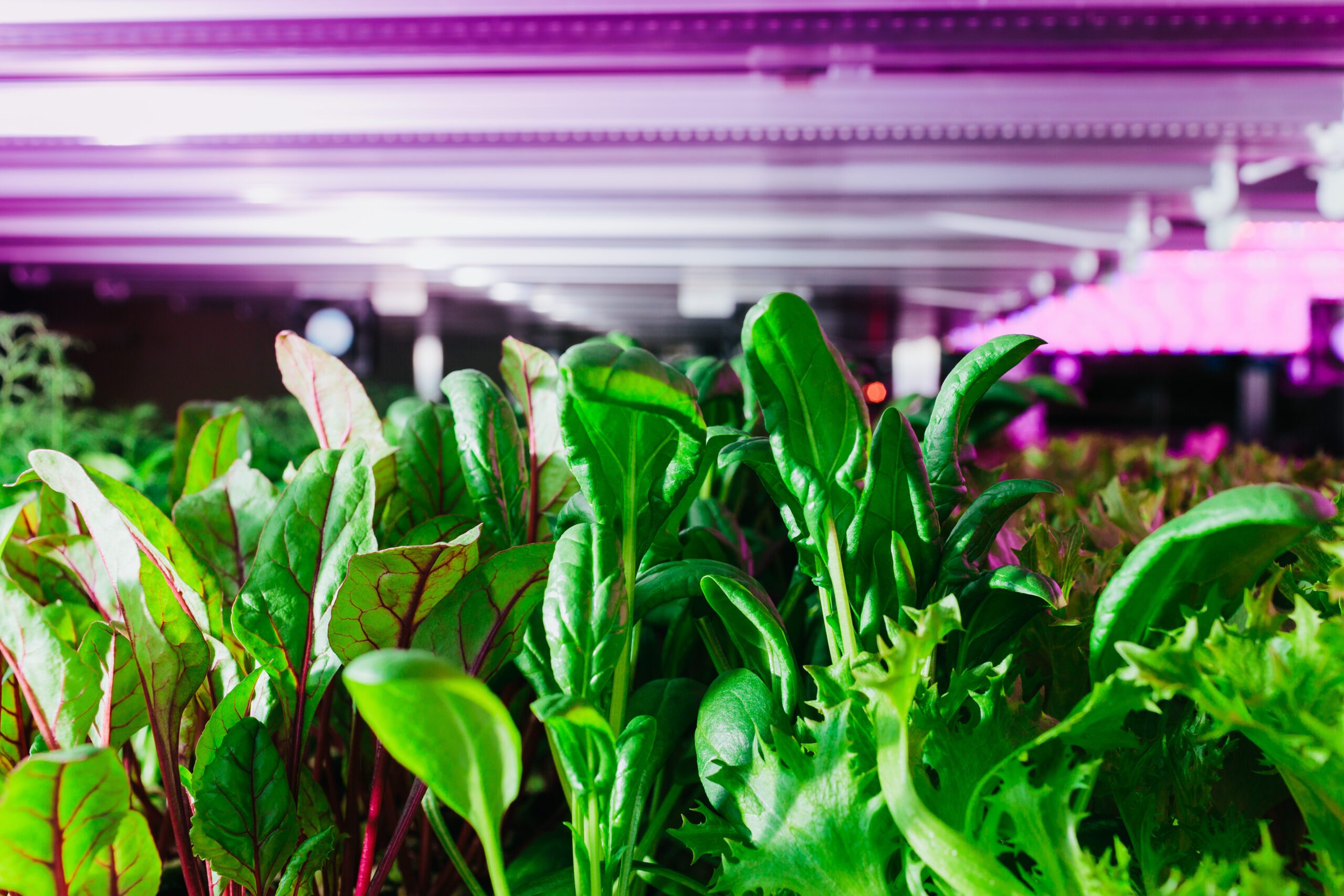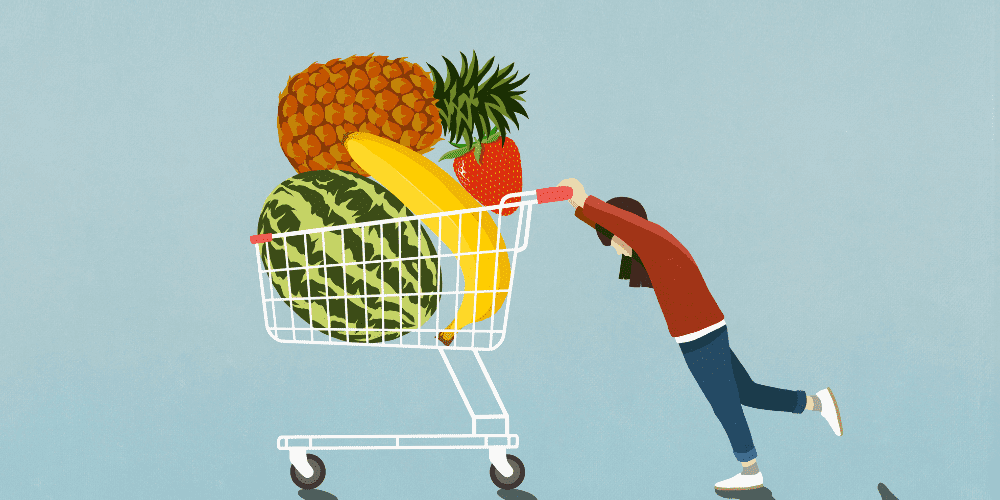In 2019, a report by think tank RethinkX posed a bold prediction on the future of food. “We are on the cusp of the deepest, fastest, most consequential disruption in food and agricultural production since the first domestication of plants and animals ten thousand years ago,” stated the report.
According to RethinkX, this new era will see a rise in alternative proteins and food treated as software, something that can be designed in a computer and replicated through advanced biotechnology. Food engineers from anywhere in the world will use these ‘molecular cookbooks’ to design products in the way that a software developer would design an app.
It may sound like science fiction, but this future food is quickly becoming the norm and part of our reality today. Investment in alternative proteins reached US$3.1 billion in 2020, three times more than any single year in the industry’s history, noted the Good Food Institute. US consulting film Kearney predicts that by 2040, 35 per cent of all meat consumed will be cultivated.
While most consumers of today will be familiar with plant-based alternative proteins, these proteins are rapidly being eclipsed by radical new advancements in food technology. Cellular agriculture products are known by a number of names – including cultivated meat, cell-based meat, cultured meat and slaughter-free meat – and take the cells of animals to produce a meat product using tissue engineering and biotechnology.
In December 2020, Singapore gave regulatory approval for company Eat Just to sell its cultivated chicken to consumers, becoming the first country in the world to make ‘lab-to-table’ dining a reality.
“This industry is exploding thanks to major investment from food industry visionaries,” says trend forecaster WGSN in its 2021 ‘Create Better: Innovating Towards a Sustainable Future’ white paper. “In 2016, there were just four cell-based food startups, according to the Good Food Institute. By early 2020, that number jumped to 70 global startups trying to recreate at least 15 different types of animal flesh, including pork, shrimp, chicken, duck, lamb and even foie gras.”
Precision fermentation
Another rapidly growing area of future food is precision fermentation. “Precision fermentation is a bit more revolutionary,” says Dr Rosie Bosworth, a future food expert with a PhD in environmental innovation and sustainable technology development. “You can tell the microorganism what the genetic code is and then feed it simple carbohydrates, such as sugar. That microbe will express, at great numbers, that very same protein. At the molecular level, you’ve got the same protein, the same DNA structure.”
The applications for this new kind of food production are vast. “It doesn’t necessarily have to be an animal,” she says. “It could be a plant, or any living organism. It opens the door for every single protein on earth to be produced by precision fermentation.
“Not just the cow protein, but very rare proteins that are traditionally very expensive to extract from animals or plants. Even extinct animals. So it means that animals have more competition than just plants or cultivated meat, the whole industry will be competing with new ones.”

This technology isn’t completely new; chances are, you’ve already consumed food with a precision-fermented ingredient. Many cheeses today are produced using a precision-fermented alternative for rennet, an enzyme that is traditionally extracted from calves. The Impossible Burger, which launched in Australia and New Zealand in November 2021, is also made using this technology. The plant-based burger is made with a heme protein that is produced via precision fermentation.
Now, these technologies are advancing at incredible speed and with major investments, opening the door for a major disruption to traditional forms of food production. According to the think tank, these alternatives will be up to 100 times more land efficient, 10-25 times more feedstock efficient, 20 times more time efficient, and 10 times more water efficient than traditional forms of livestock agriculture.
Bosworth says the technologies that enable precision fermentation to take place are advancing at huge rates, becoming more efficient and cost competitive. “We’re becoming more aware of just how revolutionary precision fermentation can be for the entire food system. When you marry that with a whole array of other technologies, such as the cloud, artificial intelligence and robotics, we’re having a new revolution of food as software.”
Personalised nutrition
Alongside this new technology, health and wellbeing are dictating food trends. “What we’re seeing is a huge rise in consumers interested in health and wellbeing. It is at the forefront of purchasing behaviour,” says Bosworth. “People want food that’s good for them, that’s attached to longevity, to health, to appearance. And you’ve got these new technologies that can actually understand the consumer at the very individual level, and then start to develop a suite of products that are tailored to that consumer, just like we’re seeing on our phones where all our ads are targeted to us. It will be no different with food. Food is increasingly behaving like technology. What it means is that you can start to say what you want out of your food. The nutrient content, flavour profiles, texture, all that kind of stuff.
“Eventually, you’ll be able to load it into a computer and it’ll figure out what kind of molecule is best suited, what you need to fortify it with. [Food companies] will be able to design food in real time at mass scale. It doesn’t have any provenance story.
“It’s certainly not going to look like a freshly picked bit of lettuce outside, but for major fast-moving consumer food products, it has such huge potential to be the way food is produced and to be very customised for the consumer,” she says.
Dr Jessica Danaher, a dietitian and lecturer in nutrition at RMIT University, says that gene testing will be used as a tool in this emerging space of personalised nutrition. “The most personalised you can get, is at the level of your DNA (genes),” says Danaher. “Genes influence why people can respond in different ways to the same foods and food patterns. Or, why some people lose weight on particular ‘diets’ while others don’t lose weight at all.
“While gene testing will be part of the personalised nutrition trend, there will also be emerging mobile methods and real-time sensor technologies that can help identify a person’s individual nutritional needs. The personalised nutrition market is expected to boom to US$5.5 billion by 2030 and consumers need to become aware of what is ‘personalised’ within the services they’re buying,” she says.
Along with scaling up the technology so that it is price competitive to traditional forms of meat, the main hurdle for cellular agriculture and precision fermentation is around regulation. With Singapore having now laid the groundwork for the regulatory framework of these alternative proteins, many are wondering which nations will be the next early adopters.
Bosworth notes the technology opens up opportunities for traditionally non- agricultural nations to become big players in food production.
“Essentially, this technology enables food production to become distributed anywhere,” she says. “We’re not relying on pastoral nations to grow or produce. It means that countries like Israel, Singapore, Hong Kong, China, who are largely net importers of food, can now start to become net producers of food themselves.”
Agricultural revolution
With a dry climate and little fertile soils, Israel has traditionally not been a big agricultural nation. But in the past decades, the country has been trying to change that by investing heavily in food technology. Some of the world’s major alternative protein companies are based in Israel, including Future Meat, MeaTech 3D and Aleph Farms.
In September 2021, entrepreneur and investor Erel Margalit opened a new food innovation centre in Israel’s Kiryat Shmona. In his address, Margalit said that “food tech is the next cyber[security], and I believe Israel is on its way to becoming a superpower in the field.” According to Ido Yosovzon, an agri-food technology analyst with Start-Up National Central, Israel has seen a “meteoric leap” in food tech investments.
“Investments in Israeli food tech companies in 2020 reached US$148 million, compared to US$300 million as of September 1, 2021,” he told AFP, adding that alternative proteins are the main area of growth.
Along with regulation, consumer perception remains a hurdle, particularly in the cultivated meat space. Research by the University of Sydney and Curtin University, published in Frontiers in Nutrition in 2020, found that 72 per cent of Generation Z in Australia were not ready to accept cultured meat, despite having concern for the environment and animal welfare.
“In-vitro meat and other alternatives are important as they can help to reduce greenhouse emissions and lead to better animal welfare conditions,” said the study’s lead researcher, Dr Diana Bogueva. “However, if cultured meat is to replace livestock-based proteins, it will have to emotionally and intellectually appeal to the Gen Z consumers. It may be through its physical appearance, but what seems to be more important is transparency around its environmental and other benefits.”
Many companies are tackling this head-on. In November 2021, US alternative protein company Upside Foods opened the country’s first large-scale cultivated meat facility in Emeryville, California, with plans to run public tours to show people how the products are made.
Bosworth says companies are also looking to soften the introduction by blending cell-cultured meat with other plant products. With precision fermentation, consumers are likely to see it as ingredients, such as dairy solids, in other food products.
The shifts in the way we eat are also driven by our individual choices. Recent years have seen a rise in a ‘climatarian’ diet. More than simply cutting out animal products, a climatarian diet looks more holistically at the environmental impact of all food.
“A climatarian aims to reduce their carbon footprint in everything they do, including choosing foods from farms that track their own footprints or use regenerative practices, seeking out climate hero foods, and practising zero-waste for food or packaging,” states WGSN.
“Consumers globally are four to six times more likely to trust and buy from companies with a strong purpose and that align with their personal values,” says Danaher. “We are seeing a movement from consumers to have a higher demand for food that is healthy and ethically and sustainably produced, and engagement with companies that show effort to reduce food waste.”
The climate-conscious shift on the consumer side is being reflected in government policies. According to a study published in the journal Nature Food in March 2021, food systems account for one third of all global greenhouse gas emissions. The UK’s Climate Change Committee has stated that in order for the UK to reach its goal of net zero emissions by 2050, the nation must reduce its meat consumption by 20 to 50 per cent. The National Food Strategy for England, an independent review of the UK’s food chain from field to fork, has proposed shifting diets to less meat and more fibre, fruit and vegetables, repurposing farmland for environmental conservation, supporting regenerative farming practices and investing in alternative protein startups.
“Producers are very market-driven,” says Bosworth. “Typically they’re very aware of these major and mega trends that are happening on the international stage. And obviously climate is one of those and will probably continue so long climate has a seat at the table for all major countries that are developing policy in that.”
Vertical farming
As climate change continues to dictate the choices we make, other food producers are responding with innovative solutions. At 2021’a COP 26 summit in Glasgow, a group of engineers from Scottish vertical farming company IGS erected a 5.4 metre-high vertical farm down the road from the conference, hoping to show world leaders their vision for the future of farming.
The concept of vertical farming – the practice of growing crops in controlled, indoor facilities with artificial light – has been around since the late 1990s when a New York professor challenged his students to figure out a way to feed people by growing plants indoors in vertical layers. The global vertical farming market is forecasted to reach $24.11 billion USD by 2030, according to Allied Market Research.
A 2020 study by the John Innes Centre, the University of Bristol and the aeroponic technology provider LettUs Grow published in the New Phytologist journal noted that vertical farming has a number of economic, environmental and health benefits, including better use of space, isolation from pathogens and reduction in soil degradation.
“Vertical systems allow us to extend the latitude range on which crops can be grown on the planet, from the deserts of Dubai to the 4-hour winter days of Iceland. In fact, if you were growing crops on Mars you would need to use this kind of technology because there is no soil,” said Dr Antony Dodd, senior author of the study and group leader at the John Innes Centre.

Stacked Farm is an Australian indoor vertical farming company that was established in 2017. The company uses a hydroponic method of growing indoors, where plants such as leafy greens and herbs are grown in a tray with nutrients delivered to the root system. The entire system, from seeding to packaging, runs on automation, and draws on thousands of sensors that measure each plant’s inputs – such as temperature, humidity, light intensity and nutrient composition – to achieve a desired taste, texture and appearance.
“How the operating system works is that a customer can log in to the platform and place an order or multiple orders for produce to be delivered in order to meet their requirements,” explains Stacked Farm Chief Commercial Officer Michael Spencer. “For the farm to meet this requirement it will auto seed, grow, harvest and ship the produce without us even having to interact with the customer or product itself.”
This reduces human labour requirements, workplace safety and produce contamination risks, and allows them to make use of more space in the facility. When compared with traditional production methods, indoor vertical farming consumes up to 95 per cent less water and eliminates the need for pesticides or agrochemicals of any kind. To address the energy consumption, Stacked Farm is looking at how they source power, including solar and green biogas.
Spencer says this combination of automation, machine learning and robotics represents the second generation in vertical farming. “Food quality, safety and security are the key attributes that this style of farming can consistently deliver year round, whilst also minimising the requirement for arable land and water. Research and development globally in this space has accelerated substantially over the last three years with over $1 billion being committed to not only refine this method of farming, but also build out the products that can be commercially farmed indoors. As we look to deliver for an ever growing global population with limited resources, this style of farming has a range of positive attributes to draw from to help solve this challenge.”
The future of dining out
While the food of tomorrow may be produced in different ways, what does this mean for the way we eat? The Covid-19 pandemic has rocked the global hospitality industry, with many restaurants, cafes and bars adapting to new takeaway, vaccine and social distancing requirements.
Where many brick and mortar restaurants have struggled, the pandemic has led to a boom in ‘ghost kitchens’, restaurants that have no physical premises, but solely operate as delivery-only, usually on platforms such as UberEats and Deliveroo. Some experts predict with the rise of robotics in restaurants and the convenience of takeaway, in-person restaurants will have to come up with new ways to entice diners.
“Restaurants may compete by creating more and more elaborate experiential dining, whether it’s adventuresome, like dining in the dark, or communal, where our social media habits organise dining events with like-minded individuals,” Chris Boyles, VP of Food Safety for Steritech told Modern Restaurant Magazine.
Despite the impacts of the pandemic, the hospitality industry remains a valued part of society. Recent polling by YouGov commissioned by the International Alliance for Responsible Drinking (IARD), found that nearly half of adults in the 10 countries polled agreed that their own social and mental wellbeing has been negatively affected by the closure of cafés, bars, and restaurants and 57 per cent of people polled have a better appreciation for the contribution the hospitality sector brings to their social and mental wellbeing.







